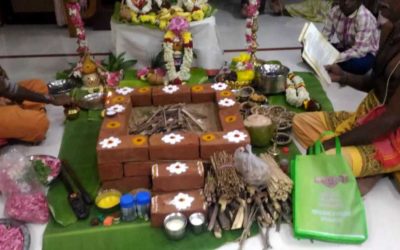The earth fills with variety of colours, the mango trees seem to drown under the weight of their tender blossoms, the rabi crop is ready to be harvested, the sounds of the chirping of birds fills the salubrious air…Vasanta Ritu(spring – the king of festivals as per Indian tradition) has graced the land in full glory.
As the raging flames from the Holi fire burning in the neighbourhood seem to brighten an already bright full-moon night of Phalguna in this season of nature’s splendour…we get ready to celebrate Holi (also referred to as Basant Utsav). And celebrate we must…for the harsh winters are but a distant memory and the scorching heat of the summers are still some time off…
Like the multitude of colours that Holi is primarily identified with in contemporary times, there are a multitude of stories behind Holi’s origins and Holi is celebrated in multitudinous ways.
The celebration is ancient and finds mention in the Atharva Parisista and some versions of the Kama Sutra (Raghavan, 1979). From Kama to Krishna, Holi is also associated variously with love and lovers and bhaktas and bhagwana. The word Holaka is mentioned in Ayurveda too.
One of the more popular stories is that Holika Dahan (burning of the Holi fire) is reminiscent of the burning of Holika, the devil, signifying the triumph of good over evil. Holika, at the behest of her brother, Hiranyakashyap, was trying to burn her little nephew Prahlad in a fire that finally consumed her.
The story goes thus: Hiranayakashap’s son Prahlad was an ardent devotee of Lord Vishnu and refused to accept his father’s claims that he was more powerful than Vishnu himself. It is also said that astrologers had prophesied that Prahlad would be the cause of his evil father’s death and hence his father wanted to get rid of him.
The king told Holika to take Prahlad into her lap and enter the fire. Holika was a powerful demon and would be protected from the fire.However, Lord Vishnu came to the aid of Prahlad and Holika was burnt in the fire. Even today, a small log of wood is removed from the fire before it is lit as a symbol of Prahlad – the good that survived against all odds.
We will narrate one more story here on Holi, which has been adapted from the Bhavishyottara Purana and is a beautiful extended metaphor of the festival. It is said that when King Raghu was ruling Ayodhya, a demoness named Dhendha (daughter of Malina – dirty, unclean) infested the city.
The people of Ayodhya gathered wood, lumps of dried cow-dung and dried leaves and heaped them in a decorated enclosure. The heap was set on fire and people danced around the fire singing, laughing and abusing Dhendha. Unable to bear the abuse, Dhendha jumped in the fire and perished, thus purifying Ayodhya.
Guru Gobind Singhji built on the festival, adding a martial colour to it when he instituted Hola Mahalla at Anandpur Sahib. Hola Mahalla involves mock fights that display martial prowess and bravery, poetry contests, singing kirtans and remembering the Ik Onkar.
Since Holi is also an agrarian celebration; in many parts of the country, sugarcane and the tender sprigs of new barley are offered to the fire. The roasted barley is distributed as prasad on the next day (it is referred to as Hola). Holi has a unique local and folk idiom to it.
While in parts of popular imagination, Holi is synonymous with Bollywood songs; it is the traditional folk music and songs in India’s innumerable dialects that weave into the rich tapestry of our colourful culture. And it is not just folk songs; Holi is Holi because of the local food (thandai, ghujiyas, the list goes on) and because of our poets and artists who could not stop extolling the festival and the season.
As mentioned earlier, Holi is also linked to love. It is however, not linked to harassment and not linked to the undignified. Holi is not an excuse for crossing the boundaries of propriety and it is incumbent upon us to stop any transgression under the garb of this festival.
Holi is a community celebration. As the colours of Holi and the infinite colours of nature come together to form a breathtaking kaleidoscope; different human beings across meaningless distinctions created by us come together to form the kaleidoscope of our nation in specific and the earth in general. And lest we forget, Holi essentially celebrates our dependence on mother nature and her bounty.
References:
1. Raghavan, V (1979). Festivals, Sports and Pastimes of India. Ahmedabad
Garima is an independent business consultant, mentors startups and is an Indic Studies enthusiast.





0 Comments